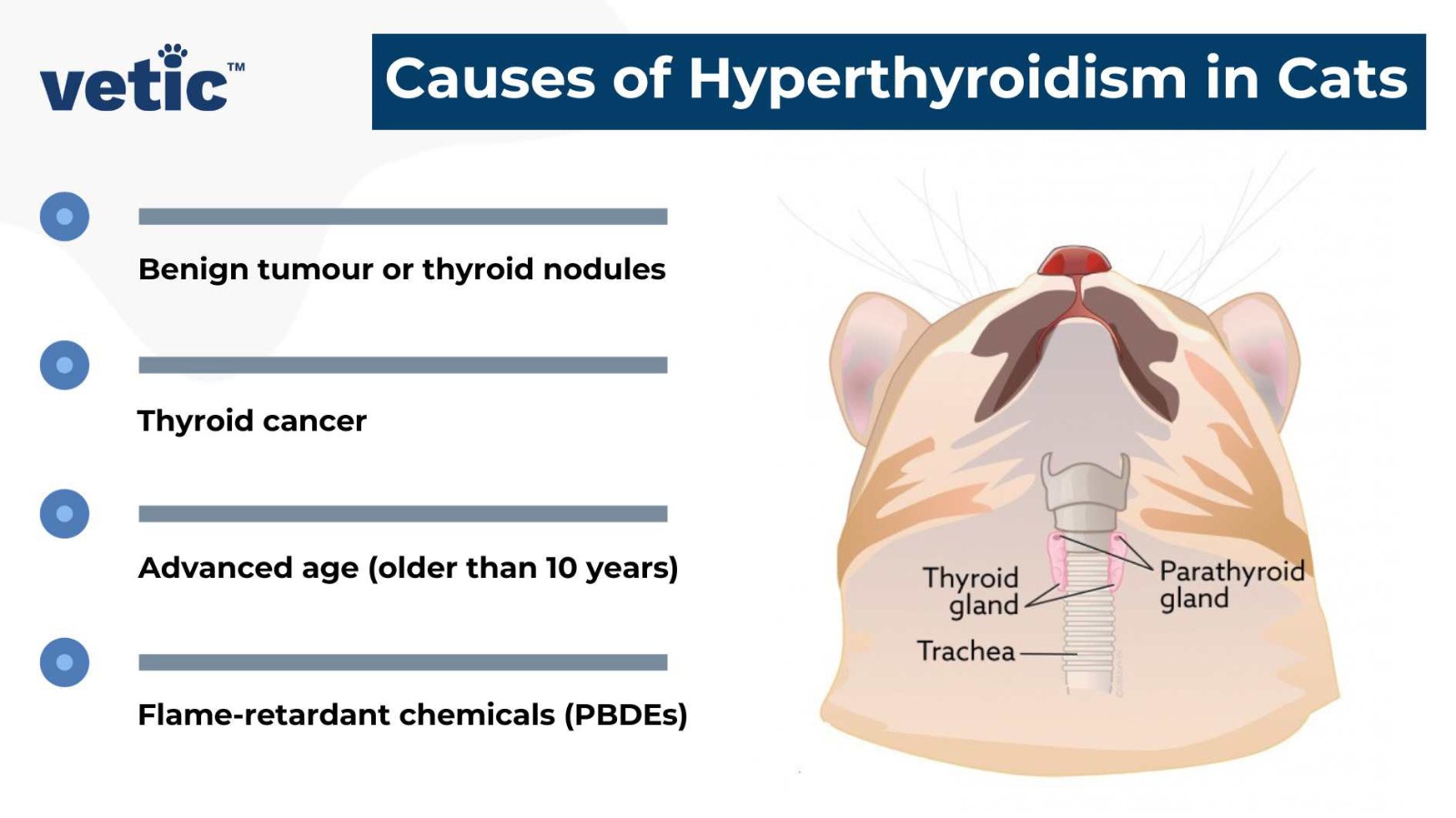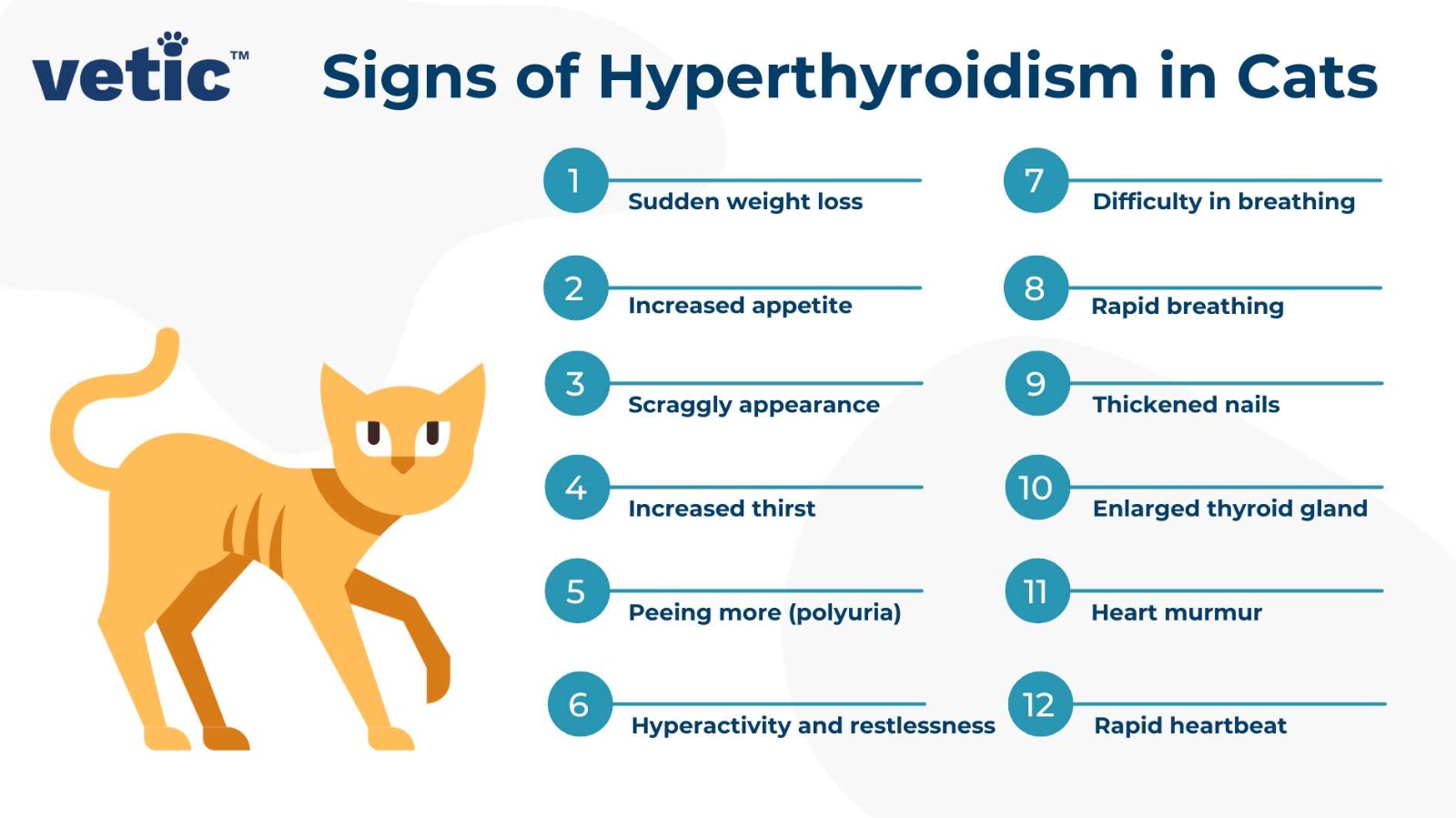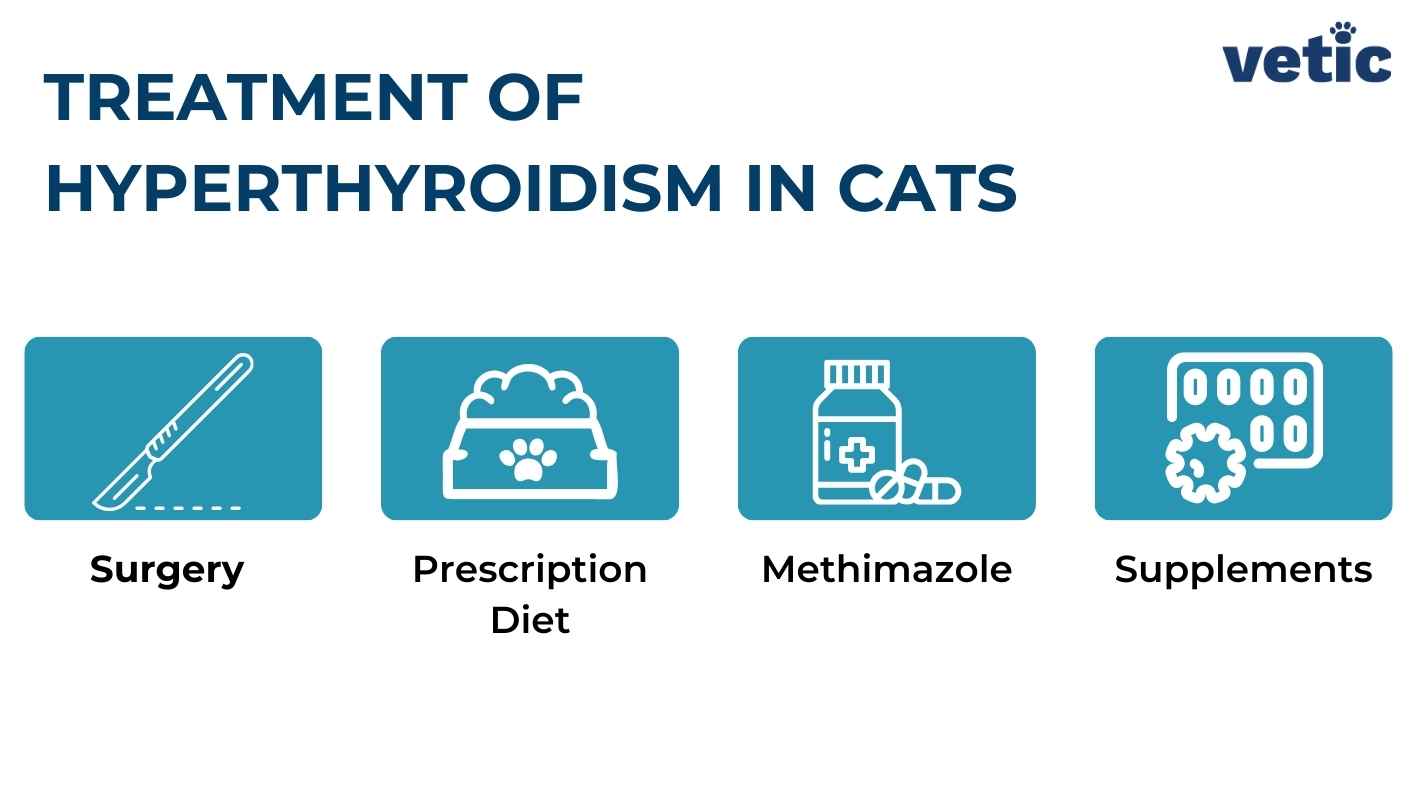What is hyperthyroidism in cats?
Hyperthyroidism in cats is the production of too much thyroid hormone. The thyroid gland becomes overactive and leads to the overproduction of the thyroid hormone thyroxine.
The primary function of thyroxine (thyroid hormone) is to maintain the metabolism level of the body. Therefore, too much thyroxine due to hyperthyroidism in cats means a higher-than-normal metabolic rate.
Hyperthyroidism in cats leads to excess appetite but no weight gain. Most cats with hyperthyroidism also experience rapid weight loss in addition to high blood pressure and heart disease (hypertrophic cardiomyopathy).
In this article, you will find everything you need to know about hyperthyroidism in cats so you know all the signs of hyperthyroidism in cats and you know when to speak to the veterinarian.
Is hyperthyroidism in cats common?
Hyperthyroidism is the most common hormonal disorder in cats. However, there is no genetic component in this disease.
Hyperthyroidism is most commonly seen among middle-aged and older cat populations. The average age of diagnosis is around 13 years.
The possible range of diagnosis of hyperthyroidism in cats is between 4 years and 20 years. However, kittens and young adult cats are rarely diagnosed with hyperthyroidism.
What are the causes of hyperthyroidism in cats?

In most of the cases, hyperthyroidism in cats is caused by a benign tumour or thyroid nodules in the thyroid gland. These are made up of thyroid gland cells and result in the overproduction of thyroxine.
Some studies show that the other causes of hyperthyroidism in cats also include –
- Thyroid cancer
- Flame-retardant chemicals (PBDEs) in the living environment of the cat
- Advanced age (cats older than 10 years)
What is the work of the thyroid gland?
The thyroid gland produces multiple hormones, but mostly it produces thyroxine or T4.
These thyroid hormones are responsible for regulating several metabolic functions of the body. Any disturbance in the thyroid hormone production affects the –
- Fat metabolism and overall weight
- Body temperature regulation
- Heart rate and heart health
- Functions of the nervous system
- Reproduction in both male and female cats
- Skin and fur health
- Muscle strength and tone
What are the signs of hyperthyroidism in cats?

The signs of hyperthyroidism in cats can be very easy to spot. For example –
- Sudden weight loss without any history of other diseases
- Increased appetite
- Scraggly appearance
- Drinking more than normal
- Peeing more than usual (polyuria)
- Hyperactivity and restlessness
- Difficulty in breathing and rapid breathing
- Thickened nails
- Enlarged thyroid gland
- Heart murmur and a rapid heartbeat (abnormal heartbeat)
It is possible for a few cats (fewer than 10%) with hyperthyroidism to show uncommon signs including loss of appetite, lethargy and weakness.
How is hyperthyroidism in cats diagnosed?
Hyperthyroidism tests for cats involve taking blood samples and testing the same for the levels of TSH, T3 and T4 hormones.
Thyroid tests for cats can return a normal T4 level. That may make the diagnosis of hyperthyroidism in cats challenging.
However, if your cat is showing signs of hyperthyroidism, your veterinarian will recommend imaging tests for a conclusive diagnosis.
It’s important to remember that the signs of hyperthyroidism in cats can overlap with diabetes, chronic hepatic disease, chronic kidney disease and cancer (lymphoma).
Studies show that hyperthyroidism in cats is often diagnosed along with kidney disease in cats. Any cat suffering from any health disorder along with hyperthyroidism requires treatment for all the conditions.
The prognosis of hyperthyroidism in cats depends upon the cat’s age and coexisting health complications.
What is the treatment of hyperthyroidism in cats?

Hyperthyroidism in cats treatment includes medication to reduce the level of thyroid hormones in their system and maintenance medication to reduce the effects of hyperthyroidism.
Surgical removal of the thyroid gland is possible, but not all veterinary hospitals have the facilities for the successful completion of this surgery. Moreover, the complete removal of the thyroid gland can also lead to hypothyroidism in cats.
Methimazole is now available in India. Methimazole treats hyperthyroidism in cats. It also reduces the clinical signs of hyperthyroidism. However, it is maintenance therapy and your cat will likely require medication for the rest of their life.
Maintenance therapy also includes specially formulated diets for cats which are low in iodine. Speak to your veterinarian about an iodine-restricted diet for cats with hyperthyroidism. Just like Methimazole, an iodine-restricted diet is not a cure and your cat will likely need it for their lifetime.
What is the prognosis of cats with hyperthyroidism?
The prognosis for hyperthyroidism in cats depends on the cat’s age, cause of the condition as well as their comorbidities.
The line of treatment you and your vet choose for hypothyroidism will also influence the outcome.
An early diagnosis without any complications such as thyroid cancer or the involvement of cardiac health generally has a fair prognosis.
What is the follow-up care for cats with hyperthyroidism?
Once your vet begins the treatment, you will need to take your cat for examination and blood tests every couple of weeks. It is necessary to see how the medications are affecting the levels of thyroid hormones in the blood.
If your cat undergoes surgery, you will need to monitor their thyroxine level every month for the next 6 months and at least once in 3-6 months for the rest of their life. Your veterinarian should explain the necessity of these examinations since the removal of thyroid glands will result in low blood calcium and may affect the function of the voice box.
